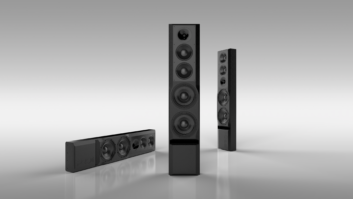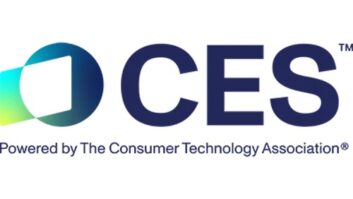Radio frequency identification, commonly referred to as RFID, is a groundbreaking technology about to revolutionize the way items are tracked from manufacturer to retailers’ warehouses to store shelves and possibly beyond, according to some industry observers.
It’s the “beyond” part that might get in the way of its own progress, however. Consumer advocacy groups want to prevent “Big Brother” from tracking individuals post-purchase, as some argue would be possible if the technology is used to its fullest potential.
By definition, RFID is any technology that uses radio waves to automatically identify single items. The most common method uses a microchip that is attached to an antenna, referred to as an RFID tag, which can transmit the item’s serial number or other identifying information. The tag then transmits the data to an RFID reader, which is attached to a computer that can make use of the information.
Developed during World War II to identify “friendly” aircraft, RFID is currently used by the U.S. Department of Defense, drivers with speed passes at toll booths, and ranchers tracking livestock, and it is starting to enter the retailing world. The Auto-ID Center at the Massachusetts Institute of Technology is working to develop its broadest applications. According to the center, it is “designing, building, testing and deploying a global infrastructure … that will make it possible for computers to identify any object anywhere in the world instantly.”
But one of its stated goals is much more pragmatic: “No more inventory counts.” Underscoring its potential to improve inventory tracking and enhance the conduct of business is the who’s who of retailers and vendors on the Auto-ID Center’s board of overseers. These include Best Buy, Canon, Eastman Kodak, The Home Depot, Lowe’s Companies, Target and, most significantly, Wal-Mart. These companies have made donations and presumably will invest more in electronic product code (EPC) technologies in the future.
Wal-Mart, the world’s largest retailer, brought RFID into the public consciousness this summer when it mandated that its top 100 suppliers have RFID tags attached to all cases and pallets by Jan. 1, 2005. What many assume is, if Wal-Mart does it, then eventually all retailing chains will follow suit. Then, in mid-September, protesters rallied at Chicago’s McCormick Place during the Electronic Product Code Symposium. The anti-RFID group Citizens Against Supermarket Privacy Invasion and Numbering (CASPIAN) was there — just one part of its grassroots campaign against the technology.
In a Sept. 29th brief on the symposium, Forrester Research analyst Navi Radjou reported that “many believe that Wal-Mart’s 2005 deadline is unattainable.”
“One enterprise software exec estimated that fewer than 10 suppliers would be fully compliant with Wal-Mart’s mandate,” Radjou noted. “With only 14 months left, most suppliers face huge technological challenges with deploying RFID tags and readers.” Recent Forrester data shows 10 percent of respondents have implemented RFID, while 70 percent have yet to devise a deployment plan.
When asked if Wal-Mart is providing any support — financial or otherwise — for its suppliers during this transition, spokesman Tom Williams said the company was in “ongoing dialogue” with its top vendors, which would culminate with a meeting at Wal-Mart corporate headquarters in Bentonville, Ark., on Nov. 4-5. “There will be costs on both sides, but there will also be advantages on both sides,” he said, adding Wal-Mart has not put a figure on the total costs of buying RFID readers for all of its distribution centers and stores.
Until now, a bar-coded item on a store shelf did not generate any data until it was scanned with a bar code reader, and then the data was read only once. With RFID, no human interaction is required to scan and obtain data. A reader can extract location and product description data from a tagged item every 250 milliseconds. Some readers are capable of reading data from 200 tags per second. The result is a data increase of more than one thousand times above traditional scanning methods, or as Wal-Mart’s Williams said, it’s analogous to “going from the telegraph — tap, tap, tap — to the Internet’s great speed.”
According to AMR Research, Wal-Mart’s mandate will cost consumer package goods (CPG) manufacturers a total of more than $2 billion. “CPG manufacturers can’t afford to eat that cost of deploying RFID to Wal-Mart’s specifications. Something’s got to give,” says Kara Romanow, AMR senior analyst.
A typical CPG manufacturer shipping 50 million cases per year will have to spend $13 million to $23 million to deploy RFID and satisfy Wal-Mart’s tagging requirement, AMR estimates. Tags and readers alone will cost $5 million to $10 million, but that’s just the tip of the iceberg, according to the Boston-based research company. An additional $8 million to $13 million will also have to be spent to improve existing supply-chain applications, AMR said.
Some in the industry believe that higher inventory tracking costs will mean higher costs for consumers. But, Williams said, “We don’t want to bring added costs into the store that will be transferred to the consumer.” For this reason, he said, it will be a very long time — “after I leave the planet,” he estimated — before individual SKUs are tagged. “There has to be a reason to move forward with that,” he said, and there isn’t one right now. He then added the obvious: “Companies are profit-driven.”
If that’s the case, CASPIAN and other consumer groups’ fear of Big Brother monitoring people through the products they purchase is far from reality.
According to a new study by the Wireless Data Research Group, the market for RFID technology and services could be worth $3 billion by 2007. The study predicts the market for RFID transponders will grow 18 percent annually to nearly $1 billion by 2006. RFID-based professional services such as engineering, implementation and system integration is expected to grow to $986 million in annual revenues in the next five years. That could be good news for companies such as Philips, Hitachi, Sun Microsystems and many others, which are heavily investing in research.













